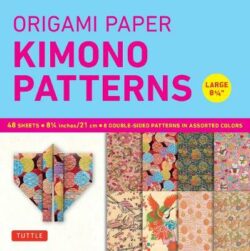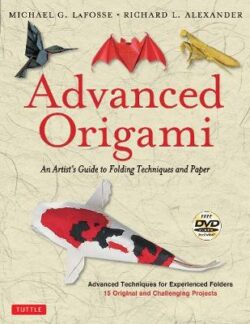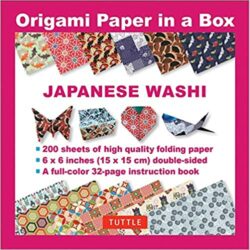Origami Paper 200 sheets Japanese Woodblock Prints 8 1/4"
$32.99
Available
Description
This pack contains 200 extra large (8.25 inch) origami sheets printed with beautiful and inspiring Japanese woodblock prints
These colourful origami papers were developed to enhance the creative work of origami artists and paper crafters. The pack contains 12 unique prints, and all of the papers are printed with coordinating colours on the reverse to provide aesthetically pleasing combinations in origami models that show both the front and back.
This origami paper pack includes:
200 sheets of high-quality origami paper
12 unique prints
Bright, vibrant colours
Double-sided colour
Step-by-step instructions for 6 easy-to-fold origami projects
Larger origami sheets, like these, produce museum-sized models and are recommended for more experienced folders.
Additional information
| Weight | 624 g |
|---|---|
| Dimensions | 210 × 210 mm |
| ISBN | 9780804853149 |
| Dimensions | 210 x 210 mm |
| Book Type | Notebook / blank book |
| Author | Tuttle Studio |
| Author Bio | The Tuttle Publishing Company was established in 1948 in Rutland, Vermont and Tokyo, Japan and is today regarded as a premier publisher and seller of books rooted in Asian culture, language and history. Since its founding in 1948, Tuttle has published more than 6,000 books and today maintains an active backlist of around 2,000 titles. Today, Tuttle publishes 150 new titles each year focusing on Asian languages, Asian food & cooking, gardening & flower arranging, crafts & origami, children's books, martial arts, Asian literature, games & graphic novels, Asian history & culture, health & fitness, self-help & Eastern religion, Asian art & collectibles, interior design & architecture, travel guides, maps, and business books. Katsushika Hokusai (1760-1849) was an influential artist and printmaker. Born in Edo (modern day Tokyo), he displayed artistic talent from a young age, and at 19 formally joined the studio of ukiyo-e artist Katsukawa Shunsho. In addition to his famous woodblock prints–the most famous of which is The Great Wave off Kanagawa (1830-1832)–he also illustrated board games, drawing instruction books, paper lanterns and dioramas. Hokusai produced more than 30,000 works in his long career, and greatly influenced the impressionist painters of the nineteenth century; Monet acquired 23 of his pieces, while Degas cited Hokusai as the inspiration behind his sketches of the human form. Utagawa Hiroshige was born in Edo (now Tokyo) in 1797. Born as Tokutaro Ando into a minor samurai family, his artistic talents went largely unnoticed until his breakthrough series of prints The 53 Stations of the Tokaido (1832-1833). In the series, he captured the popular journey along the Tokaido road–the main road between Edo (modern day Tokyo) and Kyoto. He produced some 8,000 works, which can now be seen throughout the world, including at the Metropolitan Museum of Art, Victoria & Albert Museum & the Tokaido Hiroshige Art Museum. |
| Number of Pages |




